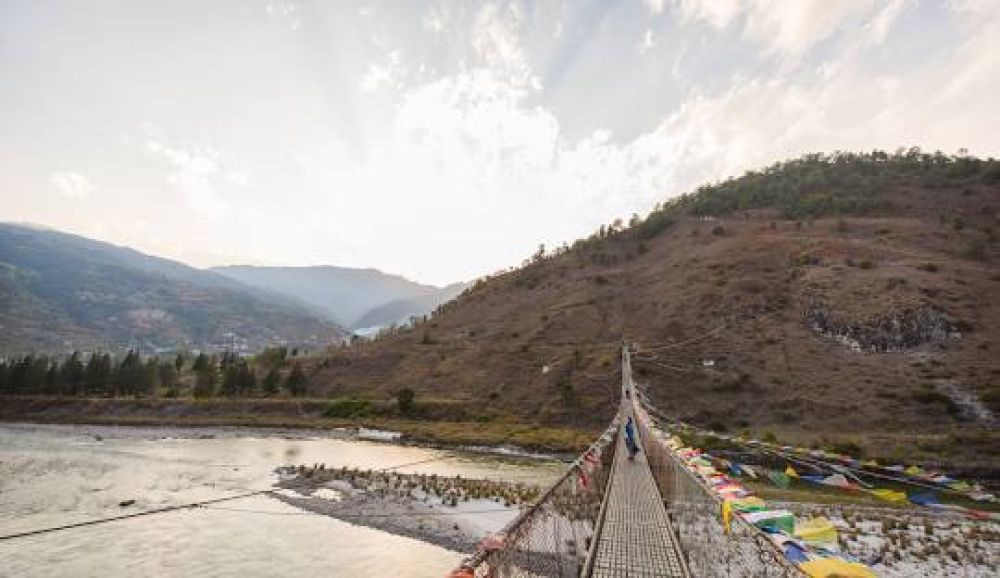

The Punakha Suspension Bridge, strung across the Po Chu River, is one of Bhutan's captivating architectural wonders. Not only does it serve a functional purpose, connecting the local communities and facilitating travel in the region, but it has also become a significant tourist attraction in the historically rich district of Punakha.
The history of Punakha as a tourist destination is deeply interwoven with the broader history of Bhutanese tourism. It was not until 1974 that Bhutan officially opened its doors to foreign tourists. This shift occurred in conjunction with the coronation of the fourth King, His Majesty Jigme Singye Wangchuck. The opening marked a new chapter for Punakha and the country as a whole, with a controlled, sustainable approach to tourism being a primary focus to preserve the nation's rich cultural heritage and natural environment.
Punakha, the ancient capital of Bhutan until 1955, boasts a pleasant climate and fertile valleys, making it a magnet for both early travelers and current visitors. The district is home to the Punakha Dzong, a majestic fortress which was, and still is, a primary draw for tourists due to its historical significance and architectural grandeur.
The Punakha Suspension Bridge is believed to be the second longest of its kind in Bhutan. Historically, it has been of great significance, enabling residents and monks to access the Punakha Dzong and surrounding villages. The bridge's close proximity to the Dzong adds to its prominence among tourists, as it provides not only a practical crossing but also exhilarating views of the valley, the river, and the Himalayan landscape.
Constructed with heavy iron chains and covered with wooden planks, the bridge is adorned with colorful prayer flags that flutter in the wind, adding to its picturesque and spiritual aura. This combination of natural beauty, adventure, and spirituality is what attracts countless visitors, contributing significantly to both local and national tourism.
Sustainable Tourism has become the latest trend in global travel, with Bhutan often cited as a global leader in this field. The principles of Gross National Happiness, which include sustainable socioeconomic development and preservation of culture and environment, heavily influence national tourism policy. As part of this policy, travelers to Bhutan are subject to a minimum daily fee which includes accommodation, food, transport, and an official guide. This fee helps to regulate the impact of tourism and supports conservation efforts.
For the Punakha Suspension Bridge, this means that visitor numbers are managed to prevent overcrowding, maintaining the bridge's integrity and the quality of the visitor experience. Being part of guided tours also ensures that tourists receive ample information about the bridge's history and significance, further enriching their visit.
In conclusion, the Punakha Suspension Bridge is a pivotal landmark within Bhutan's tourism sector, with deep historical roots and a commitment to sustainable tourism ensuring its longevity for future generations to appreciate. As visitors continue to seek out destinations that offer a blend of adventure, culture, and natural beauty, Punakha, and its majestic suspension bridge, is set to remain one of Bhutan's treasures.